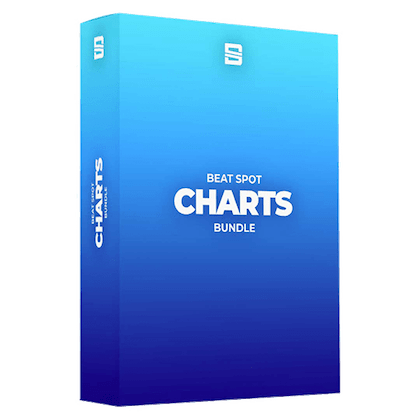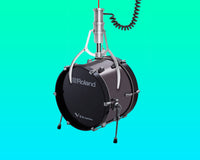Ask for any special requirement
The very first thing to do. If the mastering engineer you’re hiring doesn’t give you some indications first, be the one making the first move and simply ask!
If you want us at Beat Spot to master your track, then stick to the points in this article.
You can request a master from us here.
Preparing the Session
Make a backup session
It’s always good practice to make a dedicated copy of the latest version of your track so you can work on them without any fear of messing up your project.
Love the mix
First thing first, make sure to export a mix you actually love. There’s no such thing as “fixing in the master”.

Turn off master channel effects
If you have any plugin on the master channel, mix bus or main group, in poor words ANYTHING that collects the signal from the whole mix and blends them together, turn them off.
You should keep only stuff that’s meant for creative things such as automation lines for buildups, modulation plugins or anything else that’s not there just for the sake of loudness.

Clean up noise
Any kind of noise throughout the track that’s not meant to be there should be removed. Check whether it’s caused by unpolished stems, plugins with some sort of “noise” thing turned on, etc.
Don’t clip
Simply stay below 0 dBFS and you’re good. This is an often deceiving concept and there’s still the -6dB myth that hasn’t any reason to exist in the digital era of these days. It could be true back in the years, but now it’s not a thing to stress about anymore.
Don’t stress about the level
How many LUFS should my mix be? There’s no fixed number. Just make it sound the way you like and then the mixing engineer will take care of bringing it up to its full loudness.

Oversampling
Oversampling is a feature of plugins that multiplies the sample rate by a given factor in order to achieve a higher quality sound (especially in the high end) and then it divides it by the same factor right before the output.
In poor words, the plugin is more accurate and applies cleaner processing as there are fewer artifacts being introduced.
When exporting a mix, it’s recommended to go through all the plugins in your session and turn Oversampling on. The level of quality is up to you and your computer. The higher the Oversampling factor, the better the result, but it will also require more time to export as it’s a CPU intensive process.

Stereo and stem mastering
There are two methods for mastering: stereo mastering and stem mastering.
The first one is the process of mastering a full mix printed down into a single file.
The second one relies on multiple stems that can be rebalanced. Contrarily to mixing, stem mastering generally works on 2 to 5 stems, split into the main categories, such as vocals, drums, basses, instruments, and FXs.
Stem mastering is great for instrumental producers whenever you aren’t completely sure about your leveling decisions and for any singers in need of mastering with a helping hand on the beat-vocal balance.
Instrumental version
Do you need a second version of your song without the vocal? Print out both versions so you can get them back with a cohesive yet fine-tuned mastering.
Radio Edit Version
Some artists might need a Radio Edit version to get it played around, the same goes for Club Edits and whatever other types of edit possible.
These versions generally change the length of the arrangement, so, apart from a couple of automation lines that might be needed, the mastering engineer can run all these edits into the same mastering chain and give you a cohesive asset of masters of your track.
Exporting the Mix
Print different versions
Not sure whether your track has a vocal that’s too loud or too soft? The same thing can happen with instruments and drums as well. Consider printing different versions and send them out to the mastering engineer so they will be able to evaluate which version is the best and can also see how each one sounds the best once run into the mastering chain.
Renaming
It’s recommended to rename your files properly. This practice will help the mastering engineer with storing your project, and, eventually, recall it if you need them to send it back or work again on it later in the future.
Renaming files properly becomes crucial as soon as you’re about to send more than one file, whether they’re stems or different versions of the mix.

Start and End Points
Make sure to export the whole track. Anything that will be left at the beginning and the end of the track will be left as it is. The only exception is given for some silence that should be left before and after the track. This is needed to avoid eventual glitches due to exporting, lost transients, or clicks due to waveforms being truncated. The mastering engineer will take care of trimming the track adequately.
Streaming Services Demystified
Asking for a dedicated master for each streaming service doesn’t make much sense. At the end of the day, the least masters possible for a track is recommended.
Streaming services have loudness targets that might change over the years, and mastering based them will leave you with a master that can “expire” out of the blue.
A mastering engineer should turn your track as loud as it sounds good.
Also, there’s a thing known as perceived loudness that will make a -8 dB LUFS master sound louder than the same at -14 dB LUFS even if the algorithm tries to gain match them.
The only differences in terms of mastering decisions are due to the headroom needed for encoding to lossy formats, depending on whether the master will be uploaded on Spotify (or else) or burnt on CDs.

Bounce Settings
It’s time to get everything out of your daw!
Use a lossless file format, generally, WAV is preferred. The bit depth shouldn’t be any lower than 24. 32 is perfect, however, it will lead to stems having a larger file size, so it’s up to how you can manage to deliver all the necessary files.
The sample rate should be at least 44.1kHz. The higher you go, the heavier the stems will be, but, most of the time, that doesn’t lead to a higher quality.
Do NOT change the sampling rate from the original mix session!
Don’t apply any dithering.
Don’t normalize track.

Check
Once you’ve exported the track, check for plugin glitches or other problems that might have occurred. We highly suggest loading it into your DAW to check the waveform as well so you can quickly spot issues like spikes in volumes, dropouts, or anything else.
Also, listen to the exported file as sometimes some plugins might not have been rendered as intended or even at all, this problem isn’t uncommon with time-based plugins such as real-time reverse effects.
Packaging
Write down the session info
Don’t let the engineer figure out things such as the BPM, key, meter, and also bit depth.
Create a text file for them and include it in the file folder.

References
If there’s a track similar to yours that you particularly enjoy the sound and would like yours to sound similar, then send it out.
Zip everything together
This is not mandatory, but it will help a lot when sending out the files and also downloading them. A simple zip file is enough. Don’t opt for heavy compression methods if you don’t know if they somehow hurt the content. Also, avoid compressed folders protected with passwords for whatever reason, if you don’t send the master to anyone else, they will be safe in the engineer’s hands.
Obviously, make sure to include all of the files prepared.

Upload
The best way to send your song out for mastering is by mailing a download link to the file package. For this, you will need to upload the files to a third-party hosting service like Dropbox or WeTransfer.
You can sign up free to the basic Dropbox plan and immediately start uploading and creating share links that don’t expire. The file recipient doesn’t need to create an account. The basic account allows for up to 2GB to be uploaded.
Google Drive works the same way and you should already have it if you have a Gmail address. Google Drive allows for up to 15GB to be uploaded.
WeTransfer does not require you to create an account for free links but they expire in 7 days and have a 2GB limit. No need to sign up to download free.
There are many other options like Rapidshare, Zippyshare, etc. Whatever you use it’s fine, just make sure the link is open/public and working.

Request a master from us
We can make your track shine!
Check out our works here: https://www.beatspot.pro/products/services
Download our Export guide
https://www.beatspot.pro/products/export







